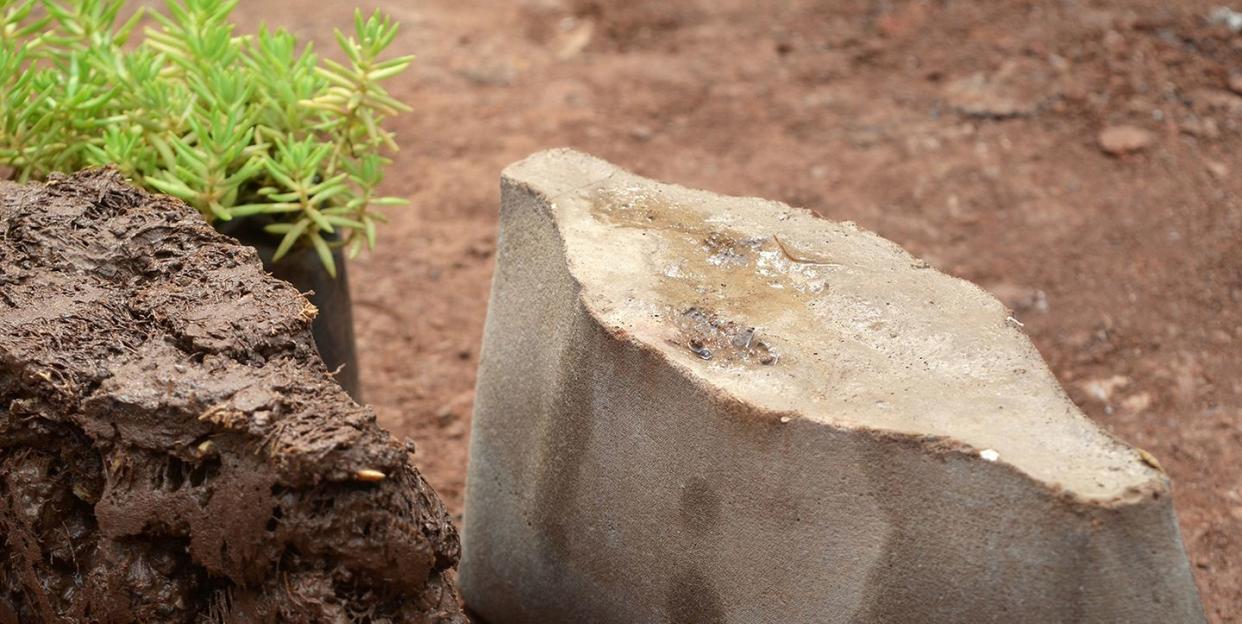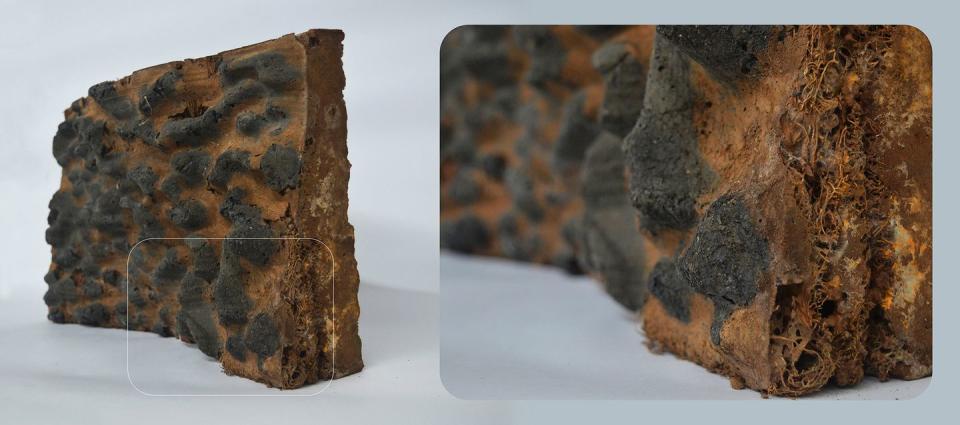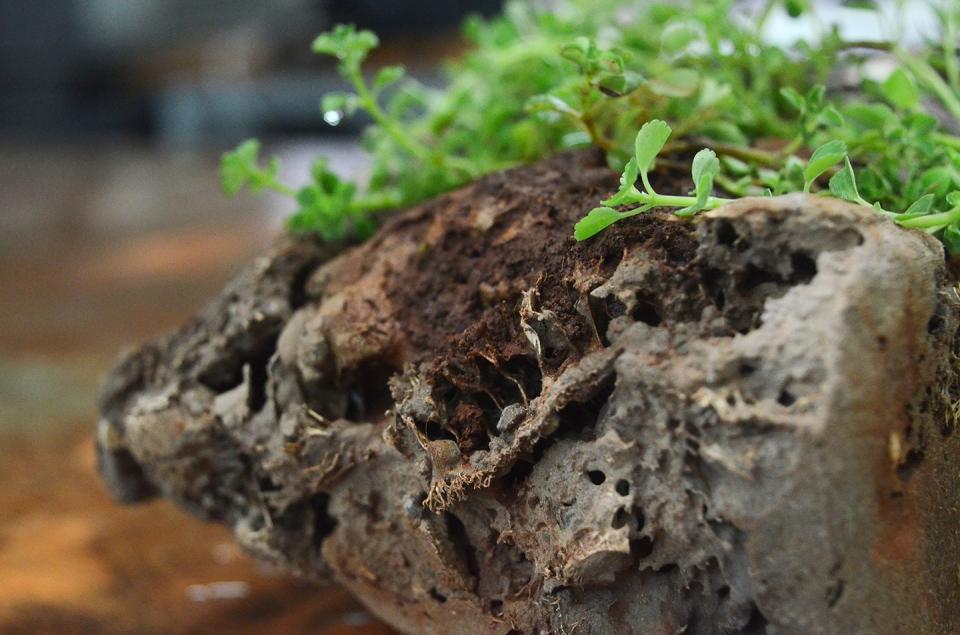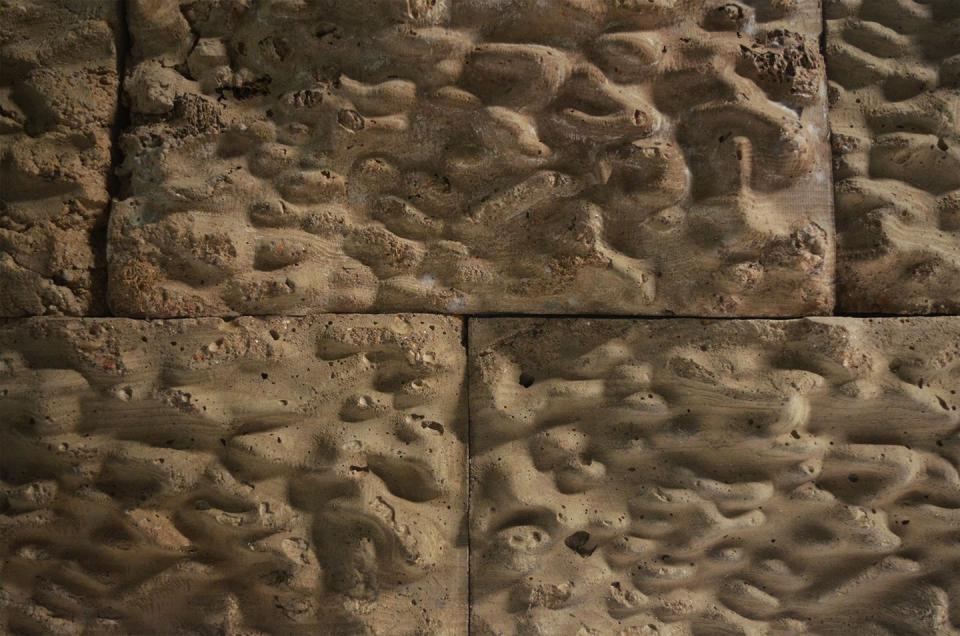Will Buildings Soon Be Made of These Green Charcoal Bricks?

With the devastating effects of climate change becoming more prevalent, designers have taken an interest in developing sustainable technology to help reverse the toll. ELLE Decor editor Charles Curkin chats with Shreyas More and Meenal Sutaria, researchers from the Indian School of Design and Innovation in Mumbai, who are developing the green charcoal bio-brick—a porous building block made from charcoal and loofah—that may one day prove to be the most important architectural breakthrough since the introduction of the rib vault in the Gothic era.
ED: What problem are you hoping to solve with these bricks?
Shreyas More: Buildings and construction account for nearly 40 percent of energy-related carbon dioxide emissions. In every stage of the life of concrete, from the extraction of raw materials to industrial cement manufacturing to on-site concrete manufacturing, carbon dioxide emissions are a major concern for air quality and the health of construction workers.

What are the green charcoal bricks made of?
More: They’re a mixture of soil, loofah, charcoal, and cement as a binder.
How do they work?
More: Organic loofah, which is a key component of the mixture, is a network of fibers that acts as a reinforcement in the green-charcoal mixture. The fibers increase the strength and flexibility of the mix while ensuring a high porosity for better anchorage for plant roots. Loofah retains water very well—its pores function like tiny water tanks to provide adequate moisture, which reduces the temperature of the material. Charcoal is used in small portions in the mix. It is highly porous and absorbs impurities from the air.

Can they be used in any climate, or are they specifically made for buildings in India?
Meenal Sutaria: The green charcoal can be designed and customized to the needs of any site and region, all from a climate, resource, and economic standpoint.

Are there ways to retrofit extant buildings with your technology, or would they need to be rebuilt from scratch?
Sutaria: Yes, the bricks could be used to retrofit existing buildings, or they can be used in new buildings.

Is climate change the most important global issue of our time?
Sutaria: Climate change is undoubtedly an important global issue, but what we fail to discuss is that resource use and depletion are an even graver threat. While we are mostly worrying about climate, the World Economic Forum forecasts that the next Industrial Revolution for the earth will be focused on solving resource scarcity, as well as climate change and waste generation.

Do you ever take aesthetics into account? Ultimately, architects will want to build using materials that are visually appealing.
Sutaria: Nature doesn’t differentiate between aesthetics and function—they’re dependent on each other. Like how the beauty of a flower visually attracts bees to feed on its nectar, in turn serving the purpose to pollinate seeds. Architects must design for aesthetics, but function must be perceived and processed as one inseparable component in the design process.

There’s a growing trend of designing large buildings out of timber, which is more sustainable than concrete. What other alternative materials do you foresee being used in the future?
Sutaria: Timber is a breathable, renewable material, and it naturally stores carbon inside it. It is a very intelligent, sustainable material for building construction. There is a huge potential in alternative materials sourced from unconventional, undervalued, small species like cryptogams, bacteria, and fungi.
You Might Also Like

